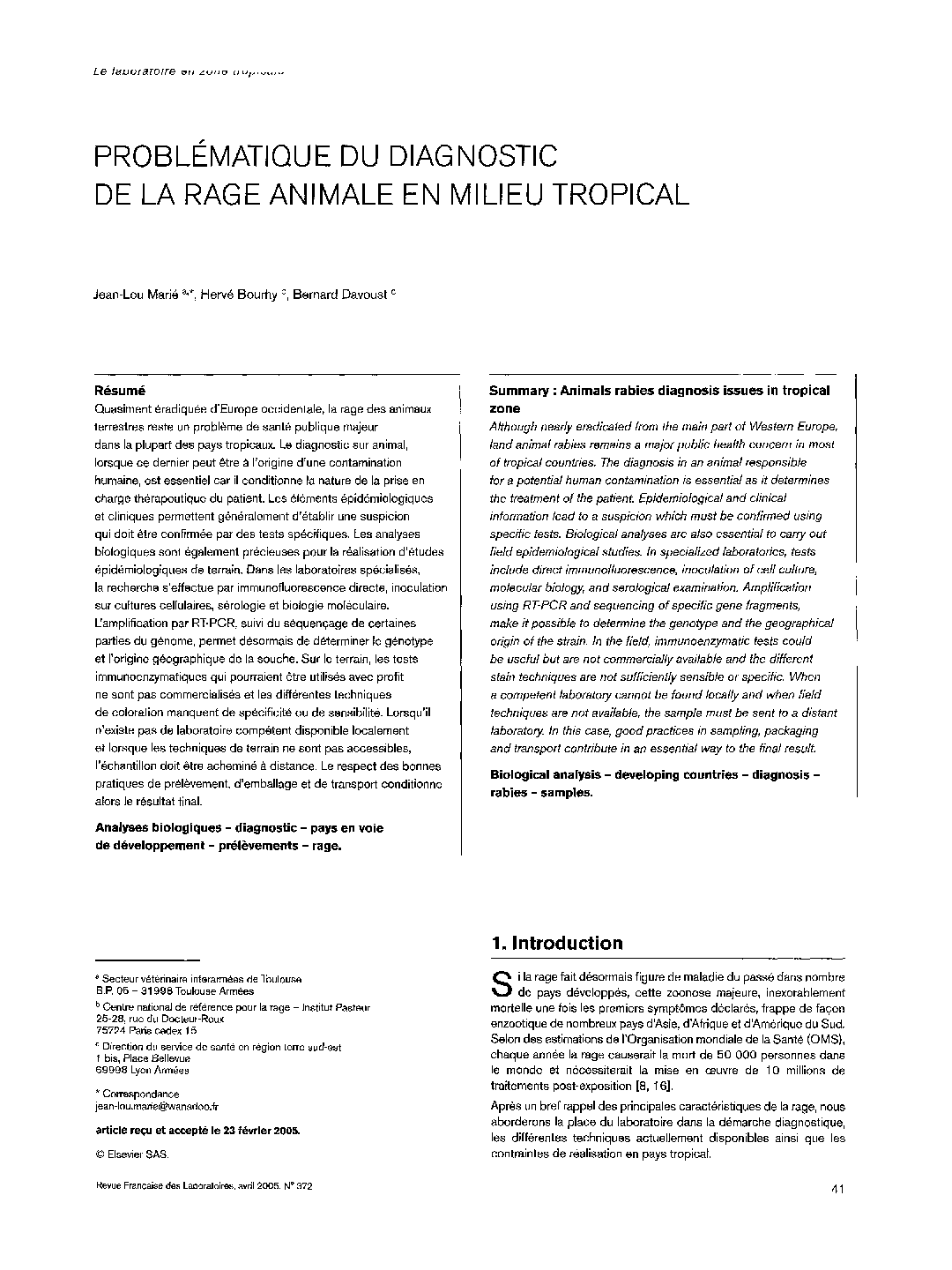| Article ID | Journal | Published Year | Pages | File Type |
|---|---|---|---|---|
| 9755218 | Revue Française des Laboratoires | 2005 | 6 Pages |
Abstract
Although nearly eradicated from the main part of Western Europe, land animal rabies remains a major public health concern in most of tropical countries. The diagnosis in an animal responsible for a potential human contamination is essential as it determines the treatment of the patient. Epidemiological and clinical information lead to a suspicion which must be confirmed using specific tests. Biological analyses are also essential to carry out field epidemiological studies. In specialized laboratories, tests include direct immunofluorescence, inoculation of cell culture, molecular biology, and serological examination. Amplification using RT-PCR and sequencing of specific gene fragments, make it possible to determine the genotype and the geographical origin of the strain. In the field, immunoenzymatic tests could be useful but are not commercially available and the different stain techniques are not sufficiently sensible or specific. When a competent laboratory cannot be found locally and when field techniques are not available, the sample must be sent to a distant laboratory. In this case, good practices in sampling, packaging and transport contribute in an essential way to the final result.
Keywords
Related Topics
Physical Sciences and Engineering
Chemistry
Analytical Chemistry
Authors
Jean-Lou Marié, Hervé Bourhy, Bernard Davoust,
